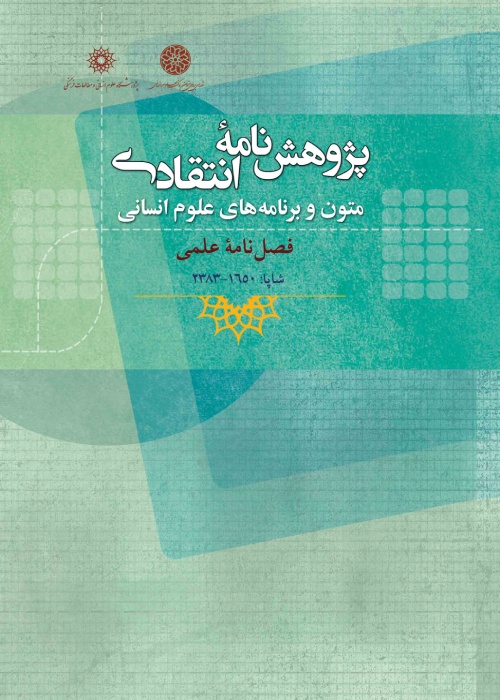A Beam of Light on the Dark Side of the Moon: Review the Book “Women in Ancient Persia”
Author(s):
Article Type:
Research/Original Article (دارای رتبه معتبر)
Abstract:
While none of the possible historical sources of Achaemenid royal libraries are available to us, with the exception of Darius the Great’s inscription at Behistun and the Cyrus Cylinder, we do not have any other chronicle inscriptions of this period. A major part of the history of the Achaemenid era has been based on the information given from Greek and sometimes Jewish sources, which researchers often point out shortcomings, contradictions, and even their narrative nature. With the development and expansion of the new archeology since the 1960’s up to now, and exploring the most important Achaemenid centers, whose discoveries began about a century earlier, a large amount of inscriptional information as well as information derived from the interpretation of material culture made available to researchers. Among them, the discovery and reading of a significant number of tablets belonging to the Achaemenid administrative and economic archives of some states, such as Pars and Babylon, reveal new information on the Achaemenid administrative and economic mechanisms. In addition, through this information, researchers have been able to extract valuable information from court individuals, as well as socio-historical and Juridical trends, and even specialization in artistic events. According to them, Achaemenid history is brought closer to reality. The evolution of academic science from the middle of the twentieth century led to more specialized science, and social developments at that time also resulted in the formation of movements such as feminism and similar cases. The debates in these new branches have led the way to research into a wide range of history and have led to significant discoveries and perspectives. Maria Brosius is among the scholars who, according to this trend, presented their studies on Achaemenid women in the form of a doctoral thesis and then a book entitled “Women in Ancient Iran (331-559)”. This article reviews and criticizes this book along with one of its Persian translations.
Keywords:
Language:
Persian
Published:
Critical Studies in Texts & Programs of Juman Sciences, Volume:21 Issue: 96, 2021
Pages:
1 to 30
magiran.com/p2342964
دانلود و مطالعه متن این مقاله با یکی از روشهای زیر امکان پذیر است:
اشتراک شخصی
با عضویت و پرداخت آنلاین حق اشتراک یکساله به مبلغ 1,390,000ريال میتوانید 70 عنوان مطلب دانلود کنید!
اشتراک سازمانی
به کتابخانه دانشگاه یا محل کار خود پیشنهاد کنید تا اشتراک سازمانی این پایگاه را برای دسترسی نامحدود همه کاربران به متن مطالب تهیه نمایند!
توجه!
- حق عضویت دریافتی صرف حمایت از نشریات عضو و نگهداری، تکمیل و توسعه مگیران میشود.
- پرداخت حق اشتراک و دانلود مقالات اجازه بازنشر آن در سایر رسانههای چاپی و دیجیتال را به کاربر نمیدهد.
In order to view content subscription is required
Personal subscription
Subscribe magiran.com for 70 € euros via PayPal and download 70 articles during a year.
Organization subscription
Please contact us to subscribe your university or library for unlimited access!


